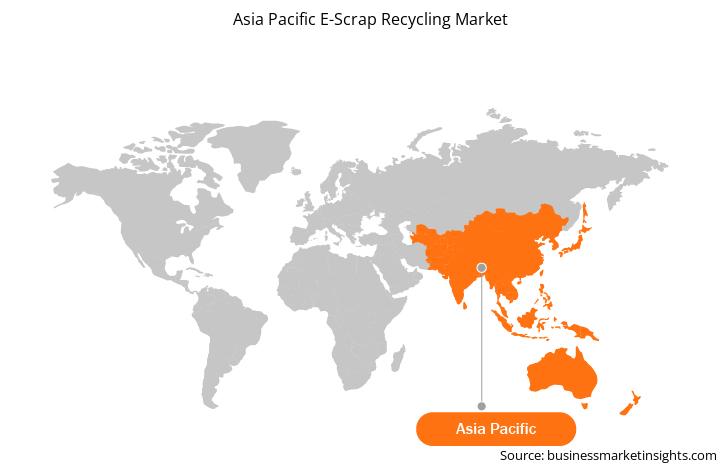Several countries have launched several programs to achieve the environmentally sound management (ESM) of e-waste. However, various challenges hamper the success and effectiveness of these programs. A lack of infrastructure and financial resources are the major challenges faced by countries while complying with the requirements stated under such programs. Identifying relevant players and encouraging cooperation are the keys to addressing these difficulties. Collecting, sorting and disassembly, and end-processing are the three stages of e-waste recycling. These procedures are conducted by informal garbage recycling businesses in several countries, lacking expertise and professional treatment. The formal e-waste recycling sector is severely limited in these countries. The informal sector could handle the first two steps of e-waste recycling with minimal environmental and health consequences. However, if it performs the end-processing, it could significantly degrade the surrounding environment. The social, environmental, and economic boundaries are the major factor of concern while transferring standard technology to countries across the region. Moreover, the informal sector's dominance and success must be considered before commencing such technology transfer to these countries. The key to a successful e-waste management program is innovative models that allow the informal sector to adopt safe recycling methods. On the other hand, hazardous operations are also outsourced to professional recycling recyclers. The need to emphasize encouraging the informal sector to increase the e-waste collection and pre-processing efforts through training and technology transfer is expected to create enormous opportunities for the e-scrap recycling market players. Several countries are likely to adopt a well-defined national e-waste management policy based on circular economic concepts as a path forward. This strategy aims to address the present environmental and health implications of e-waste, along with focusing on reducing e-waste through green design practices. The strategies adopted by the governments of the respective countries should make it easier for the private sector to build business and economic prospects for recycling materials from e-waste. The strategy should consider the country's financial, institutional, political, and social dimensions, focusing on how to combine the informal and formal e-waste recycling sectors.
With the new features and technologies, vendors can attract new customers and expand their footprints in emerging markets. This factor is likely to drive the APAC e-scrap recycling market in the coming years. The market is expected to grow at a good CAGR during the forecast period.
The APAC e-scrap recycling market is segmented based on product type, processed material and country. Based on product type, the market is segmented into IT & telecom equipment, small household appliances, large white goods, consumer electronics, and others. The large white goods segment dominated the market in 2020 and consumer electronics segment is expected to be the fastest growing during the forecast period. Based on processed material, the market is segmented into metal, glass, plastic, and others. The metal segment dominated the market in 2020 and is expected to be the fastest growing during the forecast period. Based on country, the APAC e-scrap recycling market is segmented into China, India, Japan, South Korea, and the rest of APAC. DOWA HOLDINGS CO., LTD; Ecoreco ltd; Enviro-Hub Holdings Ltd; JX Nippon Mining & Metals Corporation; Sims Metal Management Ltd; Stena Metall Ab; Tetronics; and Umicore are among the leading companies in the APAC e-scrap recycling market.
Strategic insights for the Asia Pacific E-Scrap Recycling provides data-driven analysis of the industry landscape, including current trends, key players, and regional nuances. These insights offer actionable recommendations, enabling readers to differentiate themselves from competitors by identifying untapped segments or developing unique value propositions. Leveraging data analytics, these insights help industry players anticipate the market shifts, whether investors, manufacturers, or other stakeholders. A future-oriented perspective is essential, helping stakeholders anticipate market shifts and position themselves for long-term success in this dynamic region. Ultimately, effective strategic insights empower readers to make informed decisions that drive profitability and achieve their business objectives within the market.

| Report Attribute | Details |
|---|---|
| Market size in 2021 | US$ 984.04 Million |
| Market Size by 2028 | US$ 2,945.91 Million |
| Global CAGR (2021 - 2028) | 17.0% |
| Historical Data | 2019-2020 |
| Forecast period | 2022-2028 |
| Segments Covered |
By Product Type
|
| Regions and Countries Covered | Asia-Pacific
|
| Market leaders and key company profiles |
The geographic scope of the Asia Pacific E-Scrap Recycling refers to the specific areas in which a business operates and competes. Understanding local distinctions, such as diverse consumer preferences (e.g., demand for specific plug types or battery backup durations), varying economic conditions, and regulatory environments, is crucial for tailoring strategies to specific markets. Businesses can expand their reach by identifying underserved areas or adapting their offerings to meet local demands. A clear market focus allows for more effective resource allocation, targeted marketing campaigns, and better positioning against local competitors, ultimately driving growth in those targeted areas.

The Asia Pacific E-Scrap Recycling Market is valued at US$ 984.04 Million in 2021, it is projected to reach US$ 2,945.91 Million by 2028.
As per our report Asia Pacific E-Scrap Recycling Market, the market size is valued at US$ 984.04 Million in 2021, projecting it to reach US$ 2,945.91 Million by 2028. This translates to a CAGR of approximately 17.0% during the forecast period.
The Asia Pacific E-Scrap Recycling Market report typically cover these key segments-
The historic period, base year, and forecast period can vary slightly depending on the specific market research report. However, for the Asia Pacific E-Scrap Recycling Market report:
The Asia Pacific E-Scrap Recycling Market is populated by several key players, each contributing to its growth and innovation. Some of the major players include:
The Asia Pacific E-Scrap Recycling Market report is valuable for diverse stakeholders, including:
Essentially, anyone involved in or considering involvement in the Asia Pacific E-Scrap Recycling Market value chain can benefit from the information contained in a comprehensive market report.